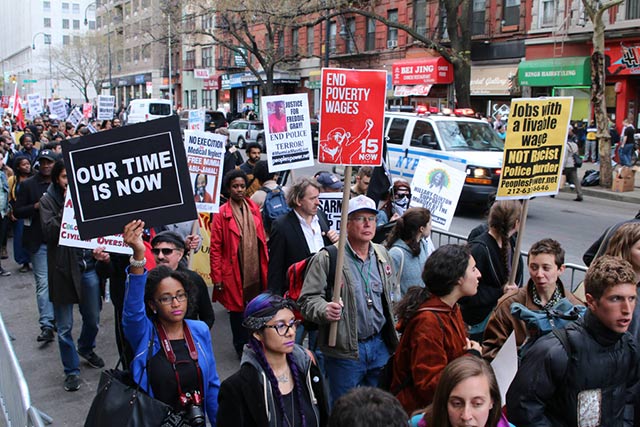
Hundreds of people, including union members, students, socialists, immigrants and others, gathered in New York City’s Union Square on May 1, International Workers Day, calling for a higher minimum wage of $15 an hour, justice for unarmed people killed by police and an end to deportation and detention of undocumented immigrants.
This year, May Day protesters in New York brought calls for an end to systemic racism and support for police accountability for the killing of unarmed civilians, especially people of color, to the forefront of the annual labor march and rally, with “Black Lives Matter” and the names of people killed by police written on signs, and chants calling for justice for the victims of police brutality or promises to “shut it down,” a mantra of the Black Lives Matter movement.
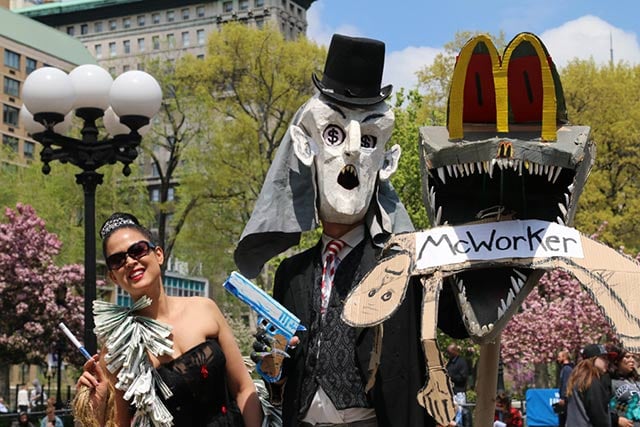 Costumed protesters in Union Square. (Photo: Matt Surrusco)
Costumed protesters in Union Square. (Photo: Matt Surrusco)
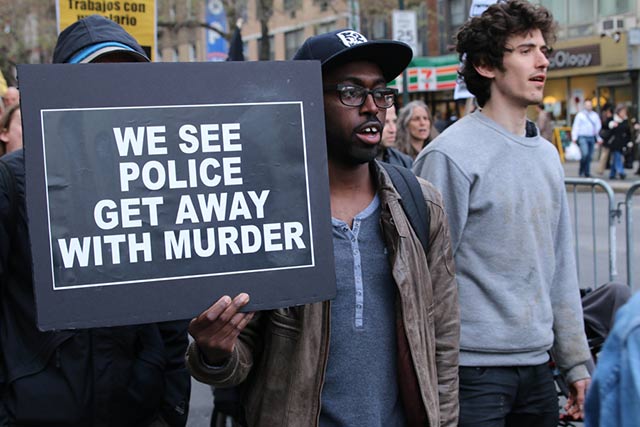 Protesters march in New York City. (Photo: Matt Surrusco)
Protesters march in New York City. (Photo: Matt Surrusco)
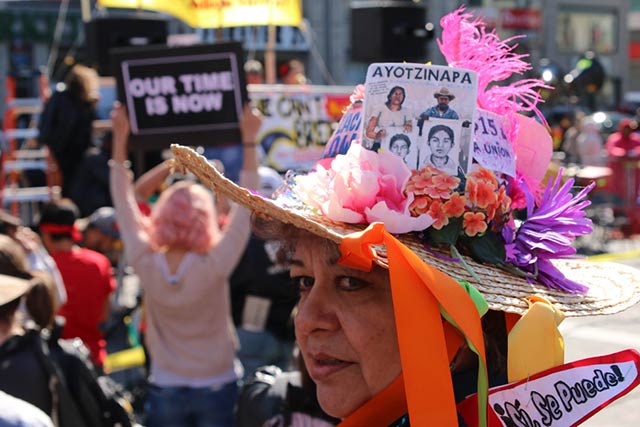 Protesters listen to May Day speakers during a rally in Union Square. (Photo: Matt Surrusco)
Protesters listen to May Day speakers during a rally in Union Square. (Photo: Matt Surrusco)
Earlier on May 1, prosecutor Marilyn Mosby announced that six Baltimore police officers involved in the arrest of Freddie Gray, a 25-year-old Black man whose spine was severed while in police custody, would be brought up on criminal charges, ranging from assault to second-degree murder.
“To the people of Baltimore and the demonstrators across America: I heard your call for ‘No justice, no peace,'” Mosby said during a press conference, following a week of street protests, property damage, arrests and the imposition of a city curfew in Baltimore. “To the youth of this city, I will seek justice on your behalf.” The six officers charged in relation to Gray’s death are currently out on bail.
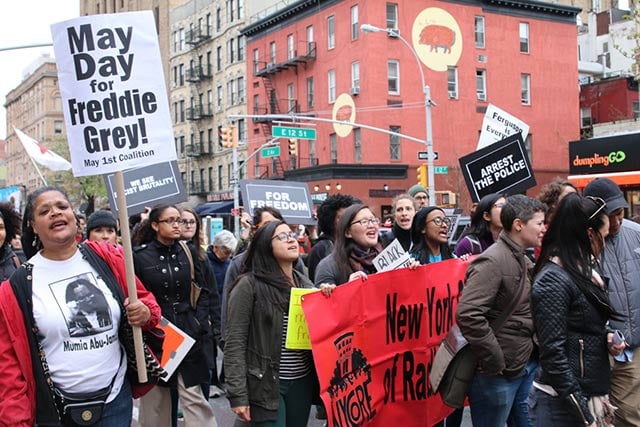 May Day protesters march along Second Avenue in New York City on May 1, 2015. (Photo: Matt Surrusco)
May Day protesters march along Second Avenue in New York City on May 1, 2015. (Photo: Matt Surrusco)
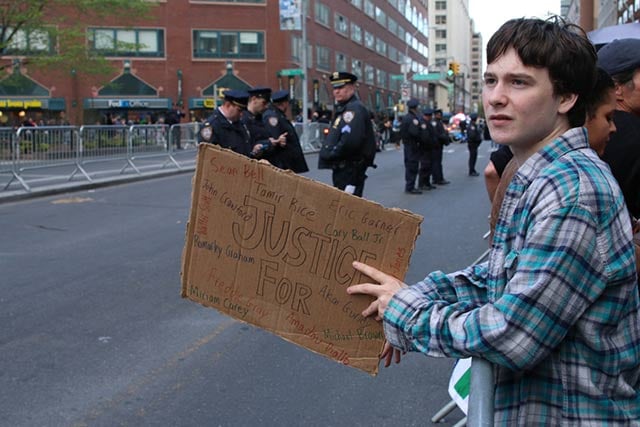 A protester leans over a police barricade along the march route near Union Square in Manhattan. (Photo: Matt Surrusco)
A protester leans over a police barricade along the march route near Union Square in Manhattan. (Photo: Matt Surrusco)
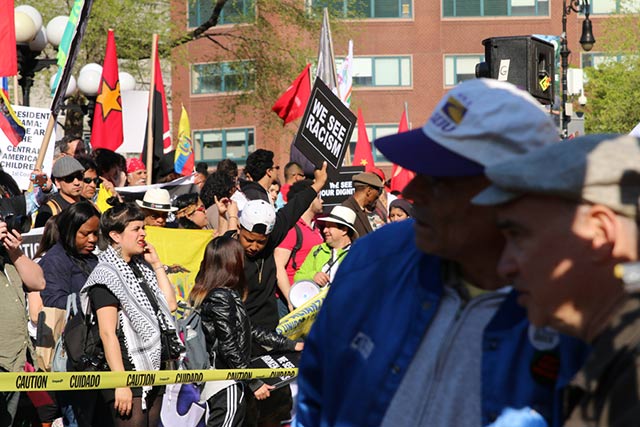 May Day protesters rally in Union Square on May 1, 2015, prior to marching to Foley Square. (Photo: Matt Surrusco)
May Day protesters rally in Union Square on May 1, 2015, prior to marching to Foley Square. (Photo: Matt Surrusco)
In New York City, on April 25, David Felix, a 24-year-old suspected of robbery, was killed by a New York City Police Department (NYPD) officer when the officer and another detective went to Felix’s residence, a home for people with mental illness, and a chase and scuffle ensued.
During the rally in Union Square, activists shared Felix’s story, citing that some media outlets had said little about the man in the week following his death, beyond that he had mental health issues. David Felix’s name has been reported incorrectly as Felix David by a number of publications, a May Day speaker told the crowd.
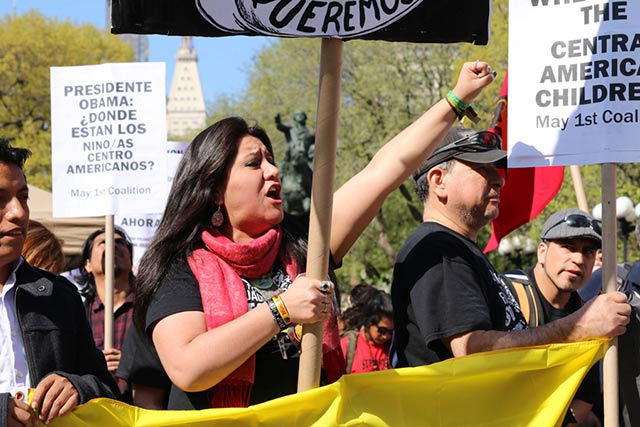 (Photo: Matt Surrusco)
(Photo: Matt Surrusco)
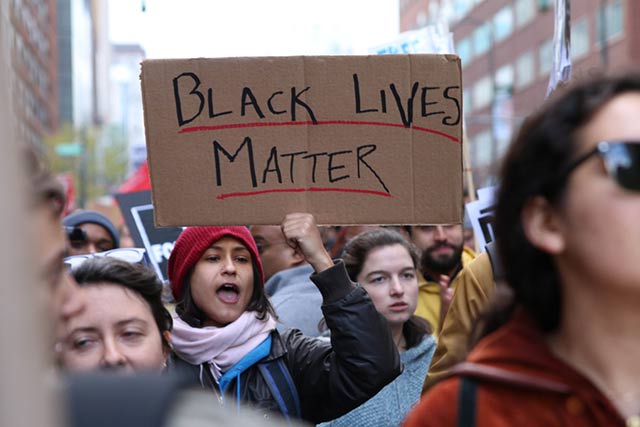 (Photo: Matt Surrusco)
(Photo: Matt Surrusco)
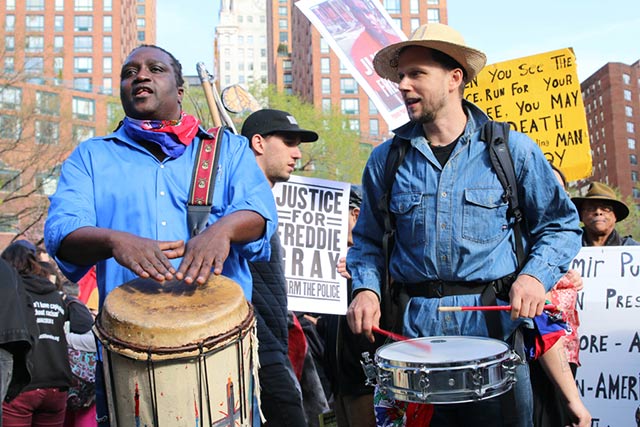 (Photo: Matt Surrusco)
(Photo: Matt Surrusco)
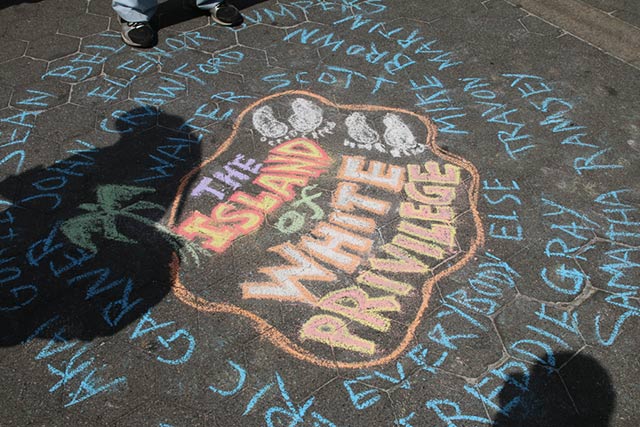 (Photo: Matt Surrusco)
(Photo: Matt Surrusco)
Although May Day’s roots can be traced back to the US labor movement’s struggles for the eight-hour day, higher wages and safer working conditions, it’s not an officially recognized holiday in the United States. Traditionally a celebration for workers’ and immigrants’ rights, May Day’s connection to struggles against police violence is also very much a part of its history.
In 1886, following the police killing of two workers at a Chicago labor rally, workers fought with police in Haymarket Square: “Someone threw a bomb at the police, killing at least one officer. Another seven policemen were killed during the ensuing riot, and police gunfire killed at least four protesters and injured many others.”
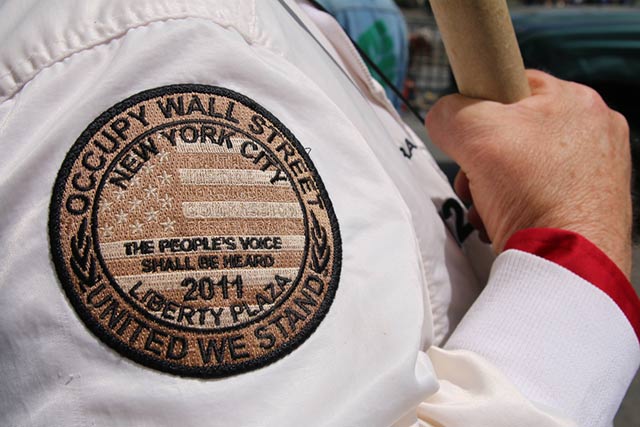 Charles Helms wears his Occupy Wall Street patch on his jacket sleeve. It was given to him in September 2011, during the first few weeks of the occupation of Zuccotti Park in New York City. (Photo: Matt Surrusco)
Charles Helms wears his Occupy Wall Street patch on his jacket sleeve. It was given to him in September 2011, during the first few weeks of the occupation of Zuccotti Park in New York City. (Photo: Matt Surrusco)
Union activists, like Charles Helms, recognize this part of labor history. “I want to let policemen know that there’s more to a union than a blue wall of silence,” said Helms, 68, an Occupy Wall Street veteran from New Jersey, who said officers must hold each other accountable and break the code of silence often upheld by police unions. “The police have to police their own.”
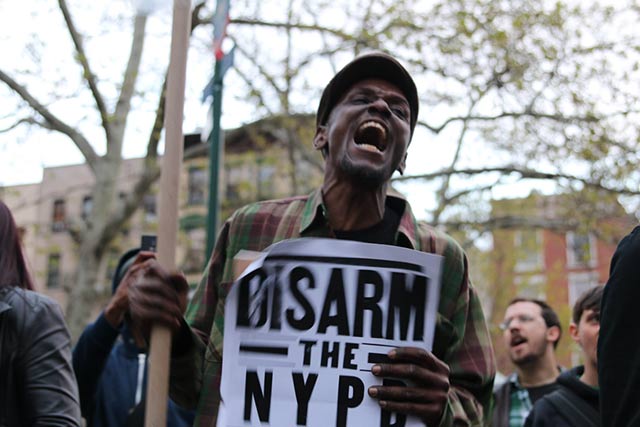 A protester helps keep a chant going while marching on May 1, 2015. (Photo: Matt Surrusco)
A protester helps keep a chant going while marching on May 1, 2015. (Photo: Matt Surrusco)
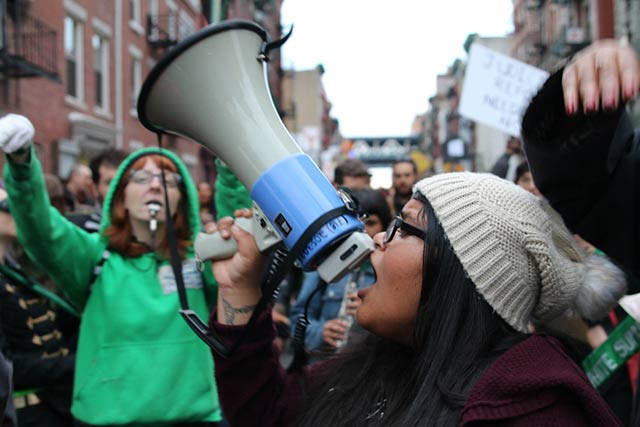 A young activist accompanies the Rude Mechanical Orchestra on vocals during the May Day march in New York City. (Photo: Matt Surrusco)
A young activist accompanies the Rude Mechanical Orchestra on vocals during the May Day march in New York City. (Photo: Matt Surrusco)
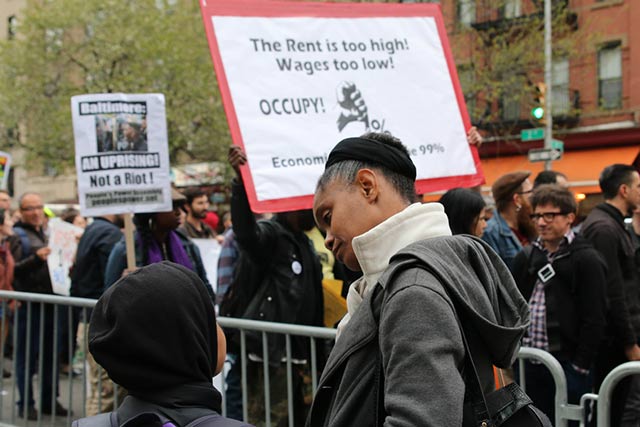 A woman and child watch protesters march by along Second Avenue in Manhattan. (Photo: Matt Surrusco)
A woman and child watch protesters march by along Second Avenue in Manhattan. (Photo: Matt Surrusco)
Around 5 pm, protesters began marching along a police barricaded route from Union Square, winding through Chinatown to Foley Square in lower Manhattan, the endpoint bordered by the New York City Supreme Court building, a few blocks from 1 Police Plaza, the NYPD’s headquarters. By 8 pm, after youth organizers helped conclude the rally, a smaller group of protesters continued to march, back to Union Square, with police officers walking alongside them, to keep marchers on the sidewalk and out of the street.
 (Photo: Matt Surrusco)
(Photo: Matt Surrusco)
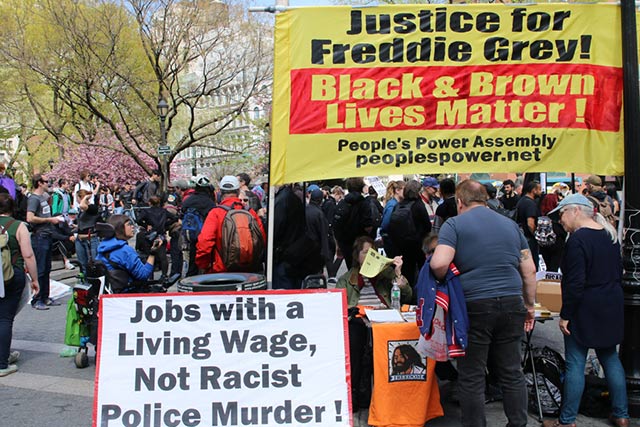 (Photo: Matt Surrusco)
(Photo: Matt Surrusco)
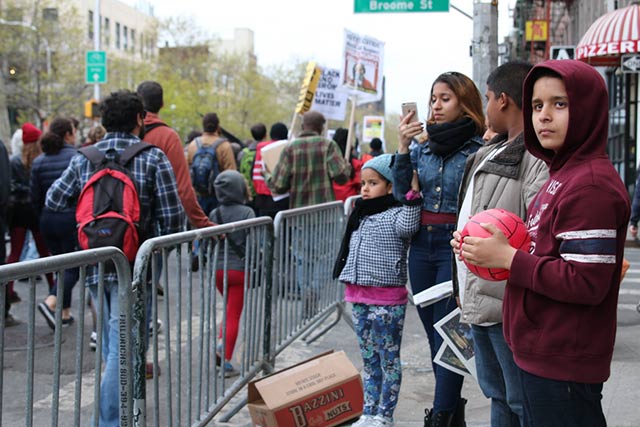 (Photo: Matt Surrusco)
(Photo: Matt Surrusco)
In Union Square, on Friday afternoon, Marvin Knight, 72, of Brooklyn, said he was at a similar protest in the 1960s, after a Black child was killed by a White NYPD officer and people rioted in Harlem and Bedford-Stuyvesant, Brooklyn.
“Fifty years later, it’s still going on,” Knight told Truthout.
Back then 90 percent of the protesters were Black, he said, but the majority of the May Day 2015 protesters were White. “Blacks got so many problems, they don’t have time to protest,” Knight said. “Every day is a protest.”
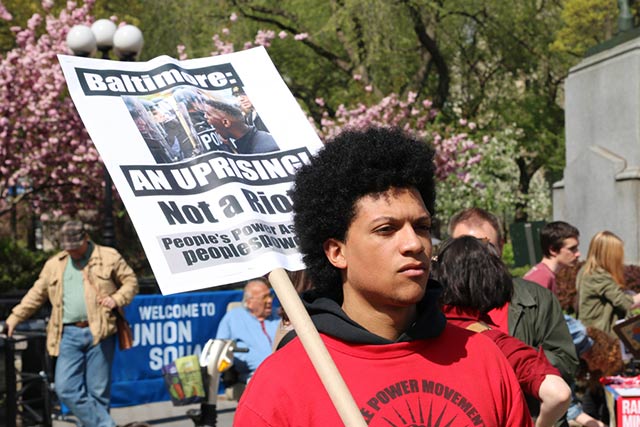 (Photo: Matt Surrusco)
(Photo: Matt Surrusco)
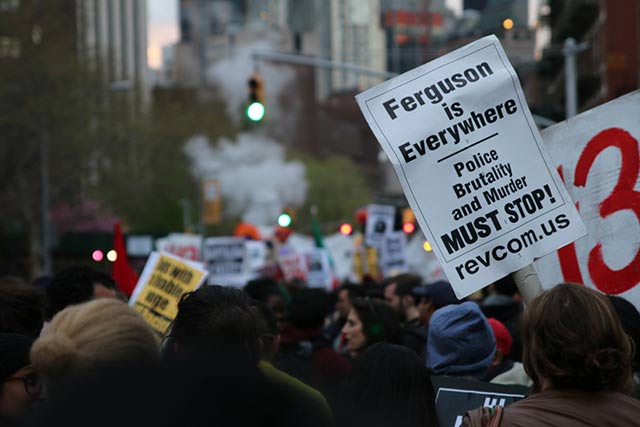 (Photo: Matt Surrusco)
(Photo: Matt Surrusco)
Our most important fundraising appeal of the year
December is the most critical time of year for Truthout, because our nonprofit news is funded almost entirely by individual donations from readers like you. So before you navigate away, we ask that you take just a second to support Truthout with a tax-deductible donation.
This year is a little different. We are up against a far-reaching, wide-scale attack on press freedom coming from the Trump administration. 2025 was a year of frightening censorship, news industry corporate consolidation, and worsening financial conditions for progressive nonprofits across the board.
We can only resist Trump’s agenda by cultivating a strong base of support. The right-wing mediasphere is funded comfortably by billionaire owners and venture capitalist philanthropists. At Truthout, we have you.
We’ve set an ambitious target for our year-end campaign — a goal of $125,000 to keep up our fight against authoritarianism in 2026. Please take a meaningful action in this fight: make a one-time or monthly donation to Truthout before December 31. If you have the means, please dig deep.